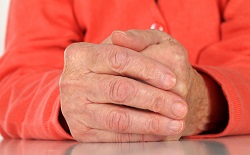Innovative computer models of Parkinson’s Disease helps match medication to disease stages
Understanding how Parkinson’s disease progresses is vital to predicting what treatment is needed, but so far tracking its course centres on models of the brain and neuromuscular systems as separate entities. One EU-funded project, NOTREMOR, is bringing these two research strands together by developing combined computational models of the brain and neuromuscular systems. ‘Our technology will be used to revolutionise the quality of analysis, monitoring and the progression of Parkinson’s Disease. We hope it will result in a complete representation of the physiology of patients,’ says Dimitrios Tzovaras, NOTREMOR project coordinator. The project is working on models linking midbrain degenerations to motor behaviour that can be used to estimate an individual’s internal midbrain states by observing motor abilities. This allows scientists to monitor the disease’s progression precisely, and track the effect of medication. Medication can then be matched with improved accuracy to the stage of the disease. NOTREMOR is also building a special visual analytics tool that can be used by healthcare professionals to support patient monitoring and the testing of treatments. ‘This should help in accelerating the deployment of our technologies in clinical environments,’ says Tzovaras. One of the biggest challenges in treating Parkinson’s is the individual and unpredictable nature of the condition. And NOTREMOR’s technology is specifically designed to tackle this. The project’s technology works by gathering two types of patient data. The first studies eye movements and the second involves the patient tracking a moving target on a tablet computer with a finger. The finger test was found to be particularly informative, Tzovaras outlines. The model’s behaviour can then be fitted to the patient’s data, boosting its predictive powers. Another advantage of the NOTREMOR system is that its technology can be used at home with a low running cost. This is particularly true of the finger tracking task. ‘The introduction of the test running on a tablet will allow the low cost, frequent and accurate monitoring of patients, including from a home environment,’ Tzovaras explains. The project is still working on evaluating the accuracy and testing the sensitivity of its models. Tzovaras hopes that the test and models, alongside the analytics platform, will become the method used to accurately assess the patient’s motor skills in great detail. He also hopes that the research outcomes of the project will be used to support effective clinical treatments for Parkinson’s. For more information, please see: project website
Countries
Greece



